
Manufacturing company Dover (NYSE:DOV) reported Q2 CY2025 results topping the market’s revenue expectations, with sales up 5.2% year on year to $2.05 billion. Its non-GAAP profit of $2.44 per share was 2.1% above analysts’ consensus estimates.
Is now the time to buy Dover? Find out by accessing our full research report, it’s free.
Dover (DOV) Q2 CY2025 Highlights:
- Revenue: $2.05 billion vs analyst estimates of $2.04 billion (5.2% year-on-year growth, 0.6% beat)
- Adjusted EPS: $2.44 vs analyst estimates of $2.39 (2.1% beat)
- Adjusted EBITDA: $448.1 million vs analyst estimates of $462.1 million (21.9% margin, 3% miss)
- Management raised its full-year Adjusted EPS guidance to $9.45 at the midpoint, a 1.6% increase
- Operating Margin: 17.3%, in line with the same quarter last year
- Free Cash Flow Margin: 7.4%, up from 5.8% in the same quarter last year
- Organic Revenue rose 1% year on year (3% in the same quarter last year)
- Market Capitalization: $26.17 billion
Dover's President and Chief Executive Officer, Richard J. Tobin, said, "Dover's second quarter results were solid, driven by excellent production performance and execution in the face of a highly dynamic global trading environment.
Company Overview
A company that manufactured critical equipment for the United States military during World War II, Dover (NYSE:DOV) manufactures engineered components and specialized equipment for numerous industries.
Revenue Growth
Examining a company’s long-term performance can provide clues about its quality. Any business can put up a good quarter or two, but many enduring ones grow for years. Unfortunately, Dover’s 3% annualized revenue growth over the last five years was sluggish. This was below our standards and is a tough starting point for our analysis.
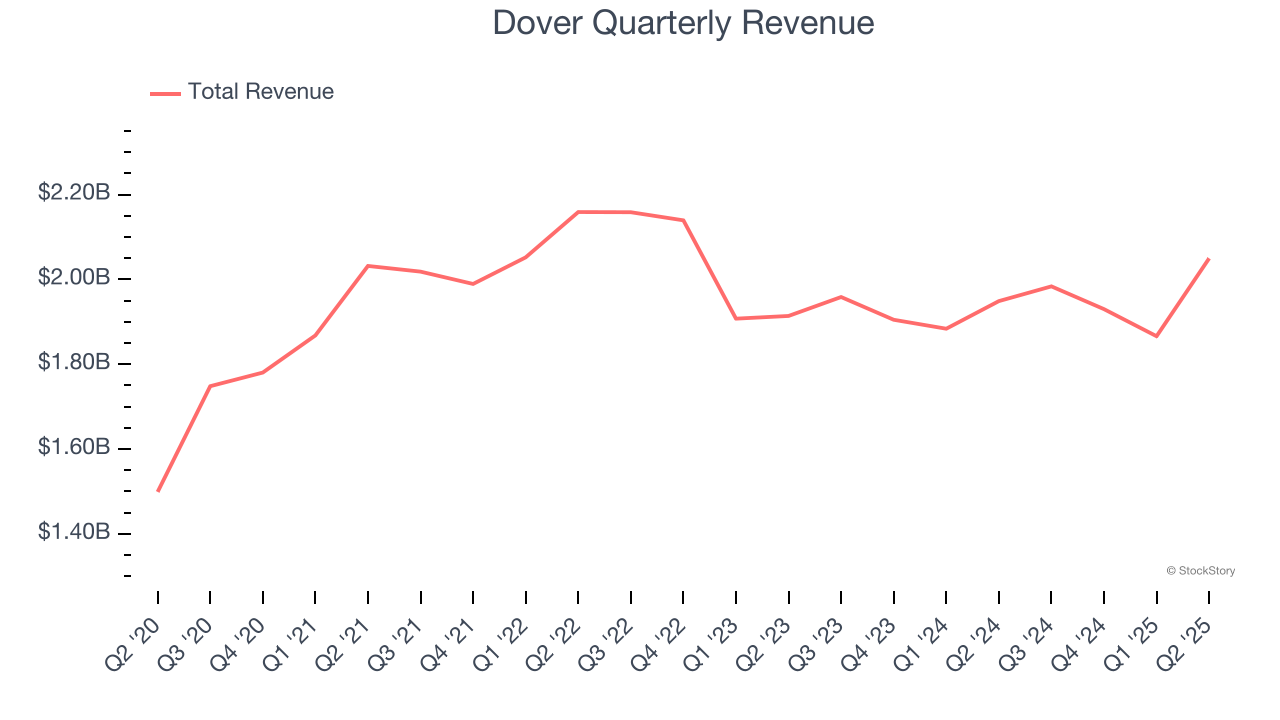
Long-term growth is the most important, but within industrials, a half-decade historical view may miss new industry trends or demand cycles. Dover’s performance shows it grew in the past but relinquished its gains over the last two years, as its revenue fell by 1.8% annually. 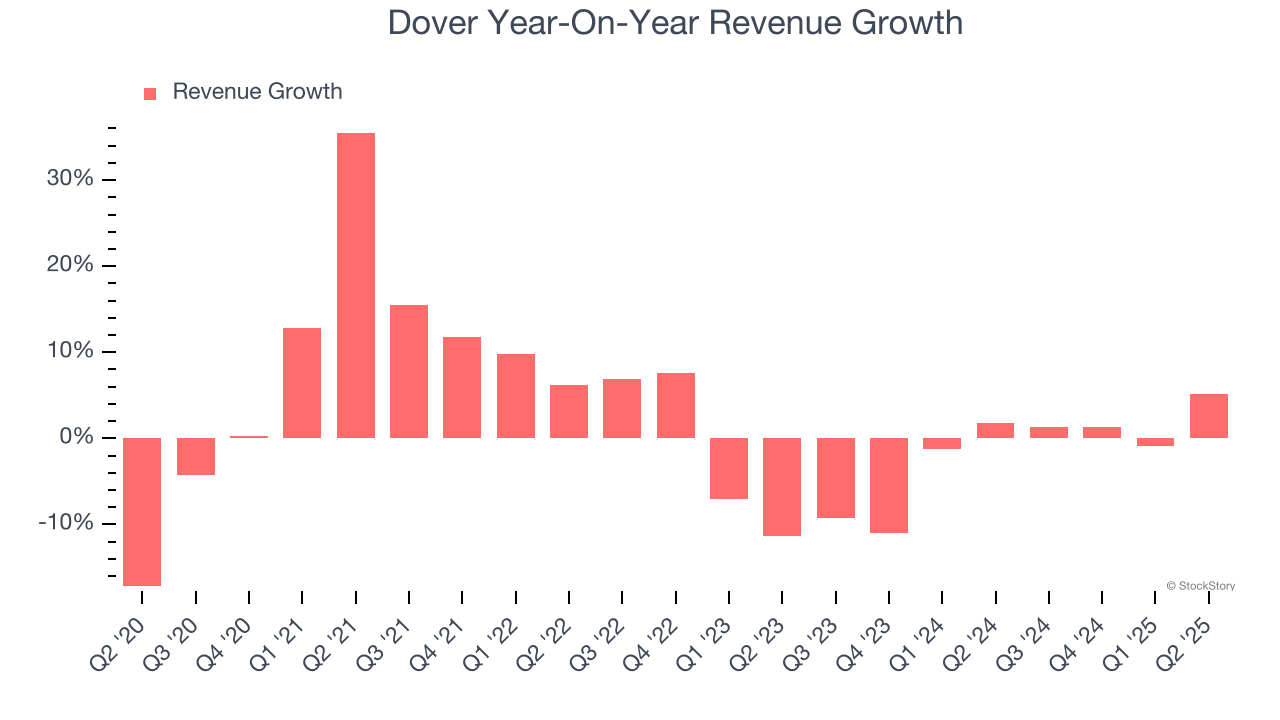
We can dig further into the company’s sales dynamics by analyzing its organic revenue, which strips out one-time events like acquisitions and currency fluctuations that don’t accurately reflect its fundamentals. Over the last two years, Dover’s organic revenue was flat. Because this number aligns with its normal revenue growth, we can see the company’s core operations (not acquisitions and divestitures) drove most of its results. 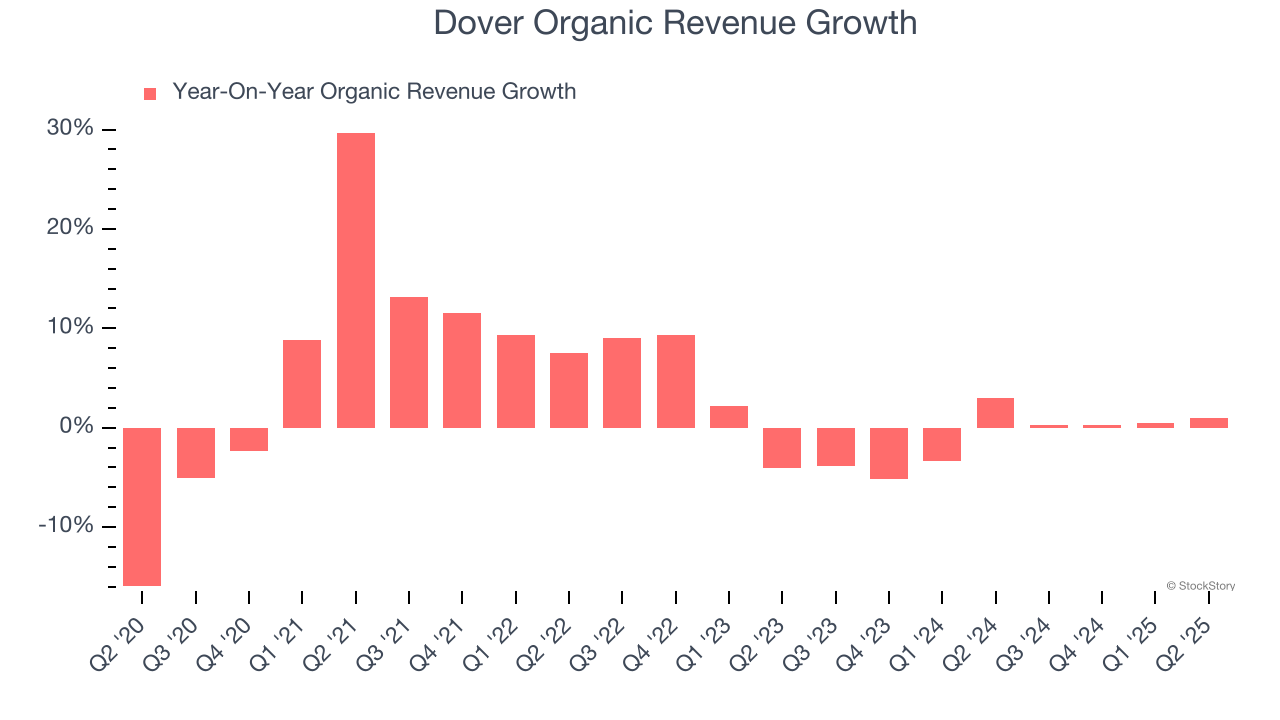
This quarter, Dover reported year-on-year revenue growth of 5.2%, and its $2.05 billion of revenue exceeded Wall Street’s estimates by 0.6%.
Looking ahead, sell-side analysts expect revenue to grow 5.8% over the next 12 months. Although this projection implies its newer products and services will fuel better top-line performance, it is still below average for the sector.
Software is eating the world and there is virtually no industry left that has been untouched by it. That drives increasing demand for tools helping software developers do their jobs, whether it be monitoring critical cloud infrastructure, integrating audio and video functionality, or ensuring smooth content streaming. Click here to access a free report on our 3 favorite stocks to play this generational megatrend.
Operating Margin
Dover’s operating margin might fluctuated slightly over the last 12 months but has remained more or less the same, averaging 15.9% over the last five years. This profitability was elite for an industrials business thanks to its efficient cost structure and economies of scale. This result isn’t surprising as its high gross margin gives it a favorable starting point.
Analyzing the trend in its profitability, Dover’s operating margin might fluctuated slightly but has generally stayed the same over the last five years. This raises questions about the company’s expense base because its revenue growth should have given it leverage on its fixed costs, resulting in better economies of scale and profitability.
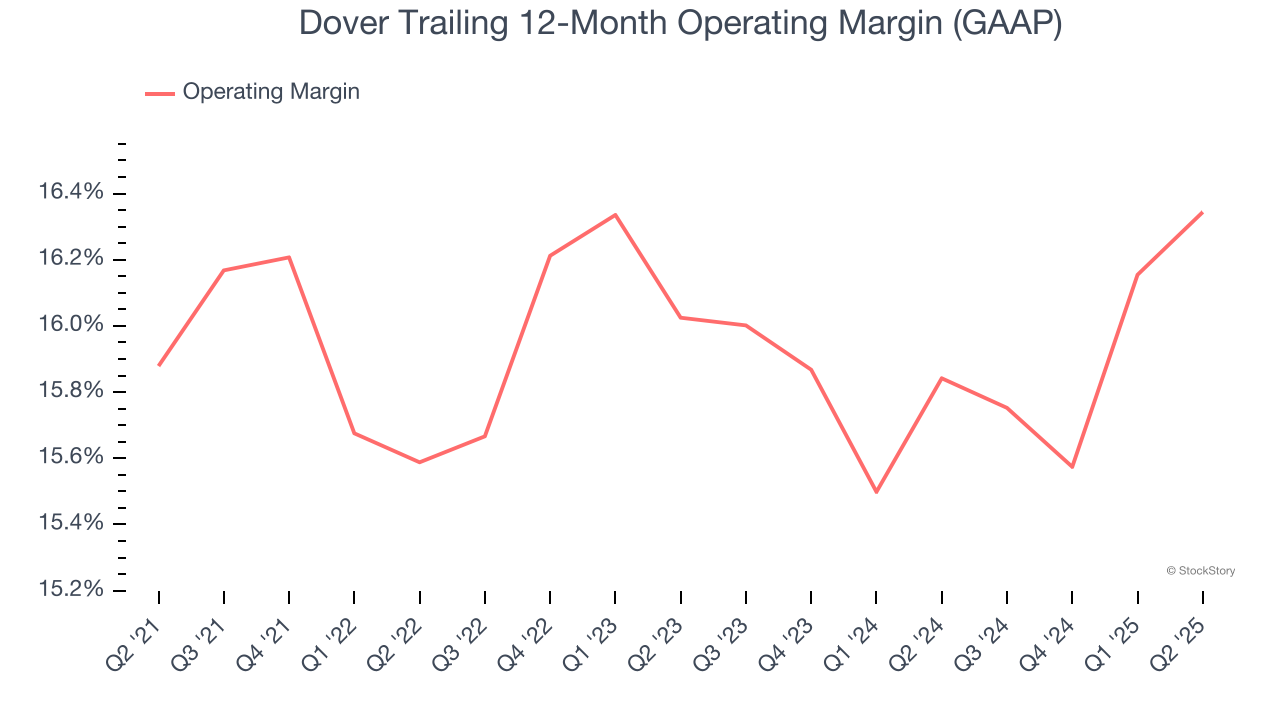
This quarter, Dover generated an operating margin profit margin of 17.3%, in line with the same quarter last year. This indicates the company’s cost structure has recently been stable.
Earnings Per Share
We track the long-term change in earnings per share (EPS) for the same reason as long-term revenue growth. Compared to revenue, however, EPS highlights whether a company’s growth is profitable.
Dover’s EPS grew at a decent 9.6% compounded annual growth rate over the last five years, higher than its 3% annualized revenue growth. This tells us the company became more profitable on a per-share basis as it expanded.
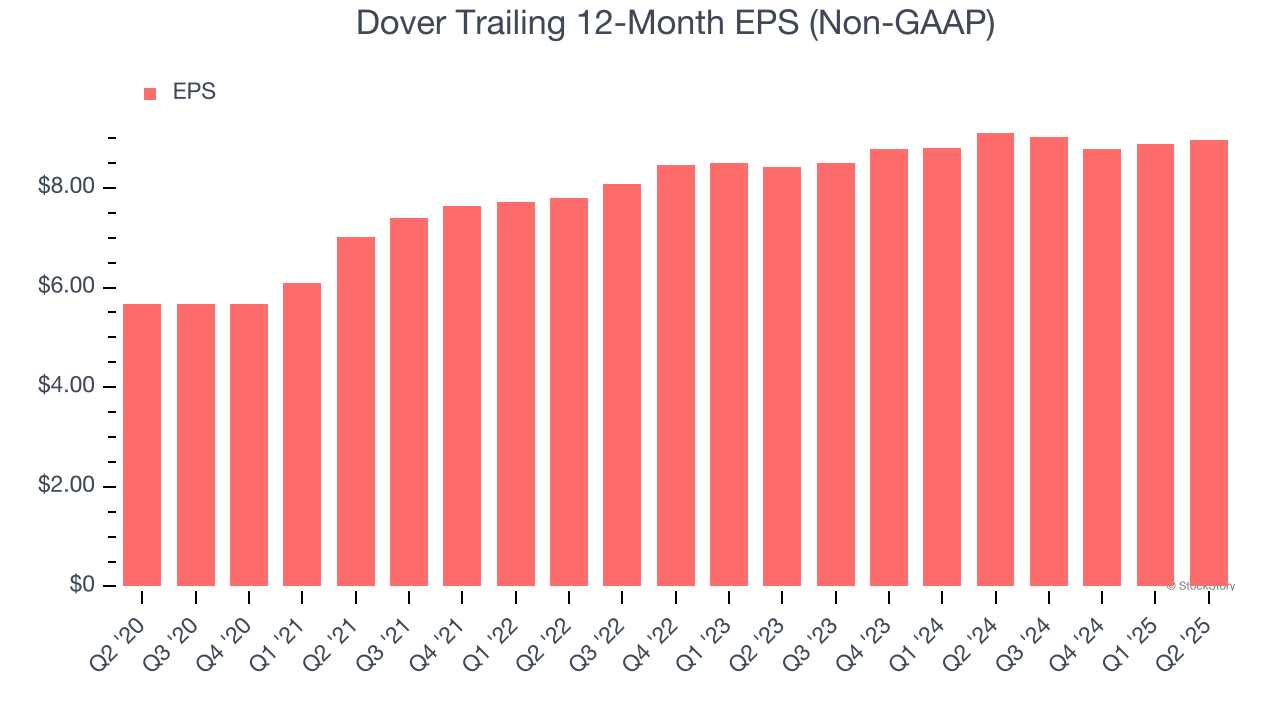
We can take a deeper look into Dover’s earnings quality to better understand the drivers of its performance. A five-year view shows that Dover has repurchased its stock, shrinking its share count by 4.8%. This tells us its EPS outperformed its revenue not because of increased operational efficiency but financial engineering, as buybacks boost per share earnings. 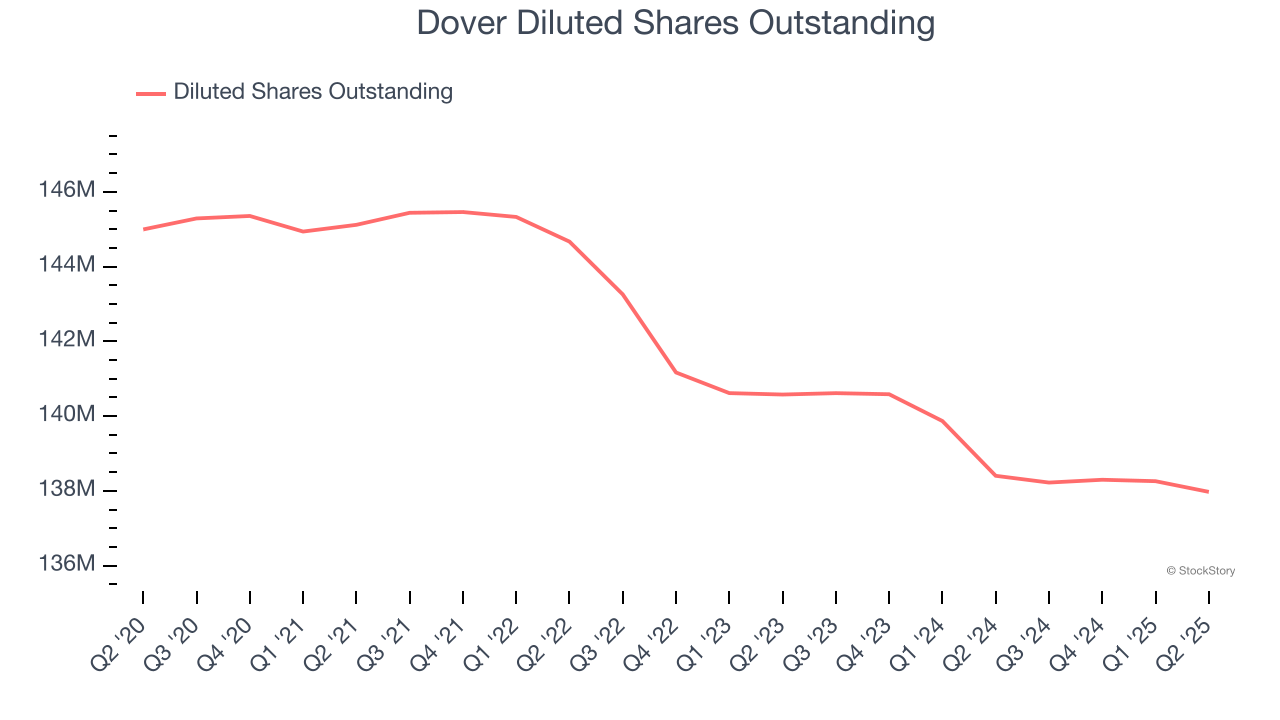
Like with revenue, we analyze EPS over a shorter period to see if we are missing a change in the business.
For Dover, its two-year annual EPS growth of 3.2% was lower than its five-year trend. We hope its growth can accelerate in the future.
In Q2, Dover reported EPS at $2.44, up from $2.36 in the same quarter last year. This print beat analysts’ estimates by 2.1%. Over the next 12 months, Wall Street expects Dover’s full-year EPS of $8.96 to grow 9.4%.
Key Takeaways from Dover’s Q2 Results
It was good to see Dover raise full-year EPS guidance to levels above analysts’ expectations. We were also happy its revenue narrowly outperformed Wall Street’s estimates. On the other hand, its organic revenue fell slightly short of Wall Street’s estimates. Still, this quarter was solid overall. The stock traded up 1.5% to $193.80 immediately following the results.
So should you invest in Dover right now? If you’re making that decision, you should consider the bigger picture of valuation, business qualities, as well as the latest earnings. We cover that in our actionable full research report which you can read here, it’s free.
